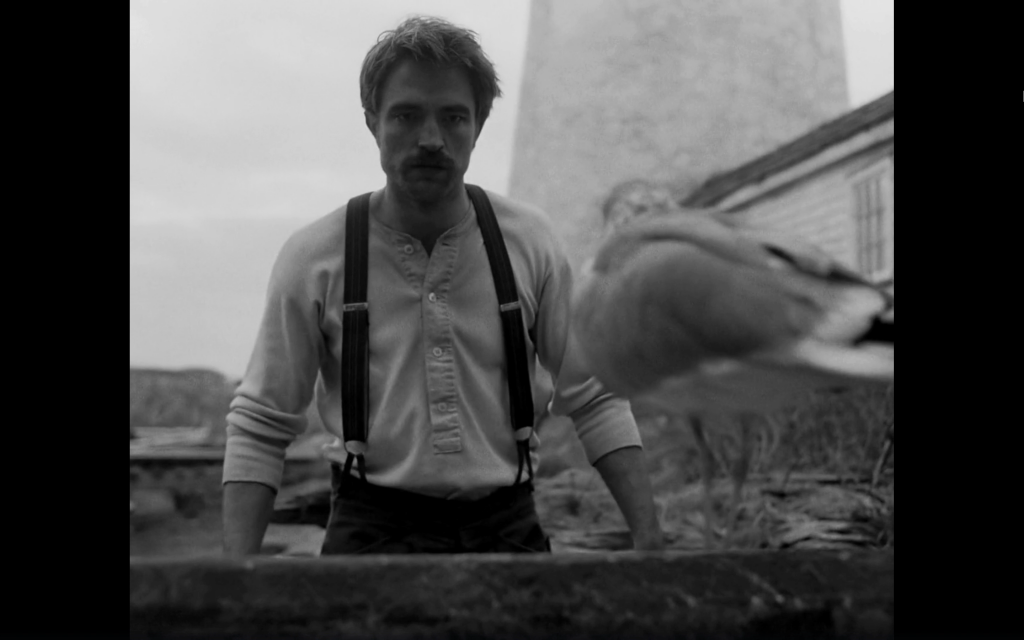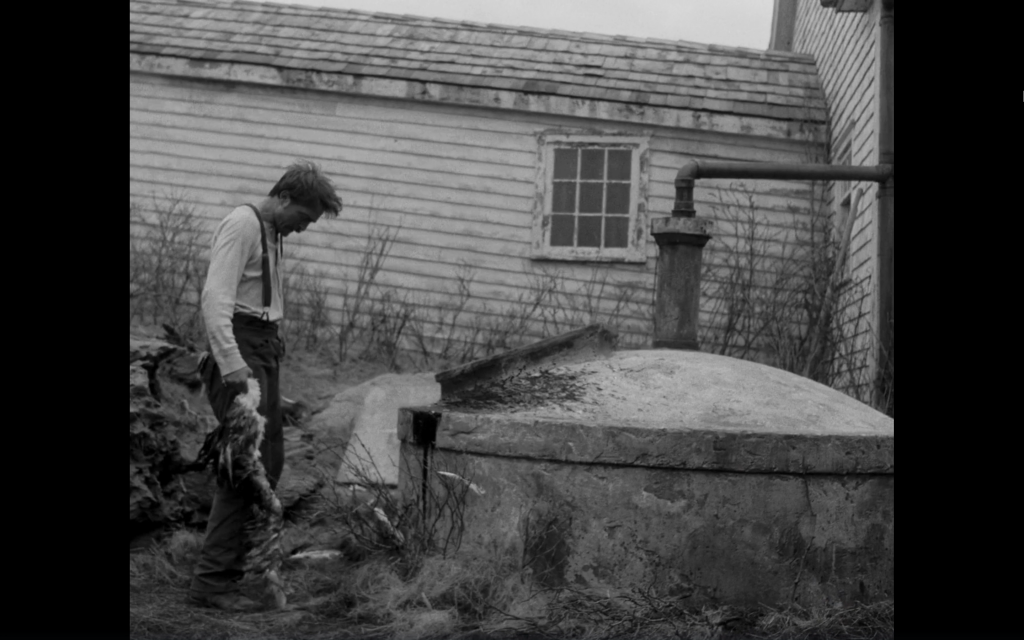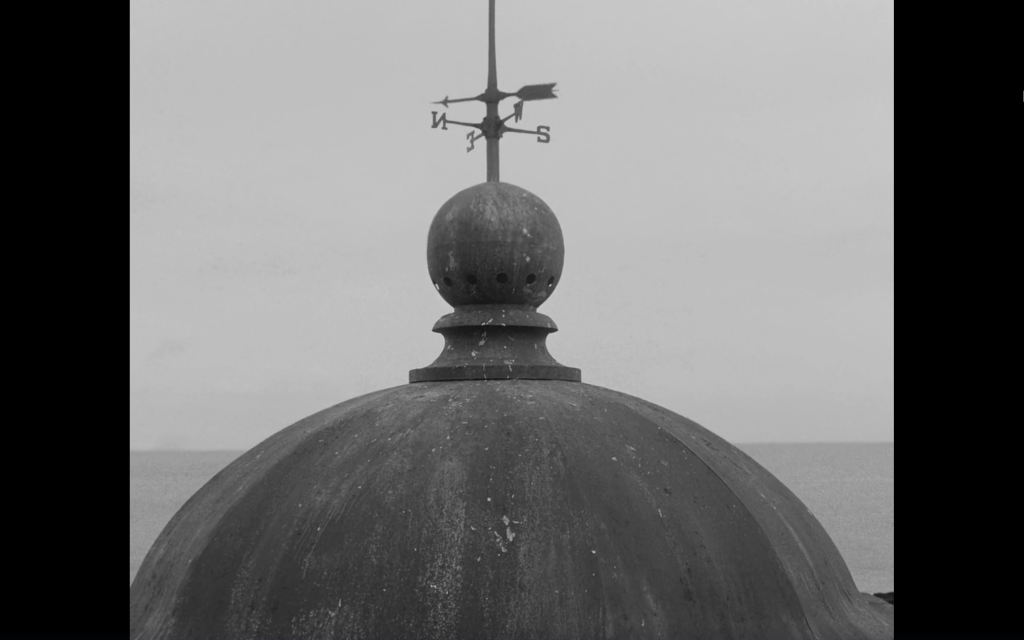“𝑩𝒆𝒔𝒕 𝒚’𝒍𝒆𝒂𝒗𝒆 𝒕𝒉𝒆 𝒈𝒖𝒍𝒍𝒔 𝒃𝒆. 𝑰𝒏 ’𝒆𝒎𝒔 𝒕𝒉𝒆 𝒔𝒐𝒖𝒍𝒔 𝒐𝒇 𝒔𝒂𝒊𝒍𝒐𝒓𝒔 𝒘𝒉𝒂𝒕 𝒎𝒆𝒕 𝒕𝒉𝒆𝒊𝒓 𝒎𝒂𝒌𝒆𝒓.”
The Lighthouse is a film about madness and evil. The film uses the arrival and death of a seagull, at the hands of Thomas, to explore the threshold between sanity and madness, and our capacity for evil.
Thomas’ sanity is questioned at the arrival of the seagull. Eggers’ decisions around the depth of focus is an important aspect when looking at Thomas’ decline of sanity. Although the seagull is visible in the shot, it is so close that it becomes blurred and the focus point falls on the face of Thomas.

This effect means that the viewer must rely on Thomas’ reaction to the seagull to understand what emotions are being evoked through the presence of the bird. The fear and distress that is seen on Thomas’s face seem irrational, due to the bird not provoking him physically. However, by representing the bird as such a blurred and phantasmatic object, the emotions it evokes within Thomas highlights his decline into madness, as his fear and distress stem from his mental understanding of the bird’s arrival. This claustrophobic moment in the scene, created through the use of the medium close up and Eggers’ decision to film in 35mm, pressurises the viewer to see the seagull as a mental confrontation for Thomas, rather than just a physical being. By representing the human-animal interaction in such a confined space, Eggers is able to enhance Thomas’ internal paranoia and descent into madness.


After a moment of tension and horror when the viewer bears witness to Thomas brutally killing the seagull, a change in ecology and atmosphere is created. Eggers’ follows through with his use of folklore and superstition that drives the narrative of his film. If the live animal is used as a warning of evil and madness, then the dead seagull is used to forbode the upcoming acts within the film. In figure 3, we see Thomas look down upon the dead seagull and a sudden burst of non-diegetic orchestral music is heard over the scene. Not only does the use of the non-diegetic sound mark a key moment within the narrative, but it also makes the viewer question the impact of Thomas’s actions. The bird, although dead, holds agency over the scene as it introduces a new chapter of the film, one where danger prevails and the threshold between sanity and madness has been crossed. The seagull is, therefore, represented as a key aspect in the film, as its impact within the narrative of this scene highlights how claustrophobia and paranoia can lead to violence and a descent into madness. Eggers heavy use of maritime superstition, involving the life of seabirds, within this scene, helps build tension but also allows questions of insanity to enter the discussion of the film. This tragic and fearful moment encapsulates how the seagull, both alive and dead, is used by Eggers to explore what causes man to become mad and how the environment that surrounds us (both ecological and physical presences) impacts our mental stability and capacity for evil.
Bibliography:
Movieclips, The Lighthouse (2019) – Killing The Seagull Scene (2/10) | Movieclips, Youtube, 11 February 2020, https://youtu.be/tkNL23NxSnY [accessed 10 January 2021].